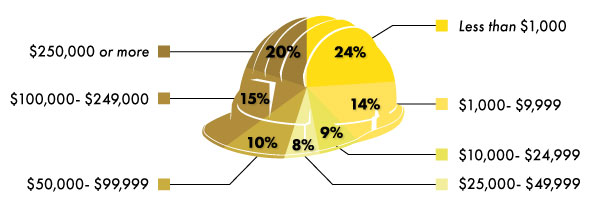- April 24, 2018
- Posted by: brandlabs
- Category: Retirement

American workers are split about 50/50 when asked if they are confident they will have enough money to pay for medical expenses in retirement.
In a 2016 survey, 45% of all workers reported they were “not too” or “not at all” confident they would have enough money to pay for their medical expenses in retirement. Fifty-four percent said they were “very” or “somewhat” confident they could pay the cost.¹
Regardless of whether you’re confident or not, it’s important to have an idea about how much healthcare may cost in retirement. By putting the costs in better perspective, you might be able to better understand what you can pay for and what you can’t.
Tip: Medicare beneficiaries spent an average of $4,734 out of pocket on health care in 2010, the most recent year for which figures are available. Forty-two percent of that went to premiums, 20% to long-term care facilities.
Source: MedicareResources.org, November 23, 2016
Health-Care Breakdown
A retired household faces three types of health-care expenses.
- A household may have the expense of premiums for Medicare Part B (which covers physician and outpatient services) and Part D (which covers drug-related expenses). Typically, Part B and Part D are taken out of a person’s Social Security check before it is mailed, so the premium cost is often overlooked by retirement-minded individuals.
- The household should expect to pay for co-payments related to Medicare-covered services that are not paid by Medigap or other health insurance.
- The retired household should expect to pay for dental care, eyeglasses, and hearing aids, which are typically not covered by Medicare or other insurance programs.
It All Adds Up
Fast Fact: Nursing Home Costs. In 2016, the national average rate for a private room in a nursing home was $92,376 a year. The national average rate for a semi-private room in a nursing home was $82,128.
Source: Genworth 2017 Cost of Care Survey
According to a HealthView Services study using more than 50 million actual cases, a healthy married couple, age 65, can expect healthcare premiums to add up to $288,400 over their lifetime. If you include dental, vision, co-pays, and out-of-pocket costs, the total rises to $377,412.²
For a healthy 55-year-old couple who plans to retire in a decade, the number jumps to $466,000. ³
Should you expect to pay this amount? Possibly. Seeing the results of one study may help you make some critical decisions when creating a strategy for retirement. Without a solid approach, health-care expenses may add up quickly and alter your retirement spending.
Out-of-Pocket Healthcare Cost
The cost of healthcare for a 65-year-old couple is projected to increase with age.
| Age 65 | Age 85 | |
|---|---|---|
| Annual cost | $7,725 | $28,644 |
| Monthly cost | $644 | $2,387 |
Source: HealthView Services: 2016 Retirement Health Care Costs Data Report (Costs shown are in future dollars.)
Prepared for the Future?
Workers were asked how much they have saved and invested for retirement — excluding their residence and defined benefit plans.

1. Employee Benefit Research Institute, 2016 Retirement Confidence Survey
2,3. HealthView Services: 2016 Retirement Health Care Costs Data Report (Costs shown are in current dollars.)
The content is developed from sources believed to be providing accurate information. The information in this material is not intended as tax or legal advice. It may not be used for the purpose of avoiding any federal tax penalties. Please consult legal or tax professionals for specific information regarding your individual situation. This material was developed and produced by FMG Suite to provide information on a topic that may be of interest. FMG Suite is not affiliated with the named broker-dealer, state- or SEC-registered investment advisory firm. The opinions expressed and material provided are for general information, and should not be considered a solicitation for the purchase or sale of any security. Copyright 2018 FMG Suite.
